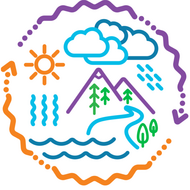PEI SOLS Kindergarten Fire: Humans and Wildfire (Spanish)
(View Complete Item Description)Los incendios forestales están ocurriendo a un ritmo creciente en el estado de Washington. Los estudiantes a menudo tienen preguntas sobre los hábitats forestales, la seguridad y la prevención de incendios forestales. En este caso, los estudiantes aprenderán sobre las formas nativas de conocer a través de la narración oral, los árboles como parte de los hábitats locales para ellos y la prevención de incendios forestales. Los estudiantes participarán en lecciones integradas de ciencia y literatura para desarrollar su comprensión de cómo los incendios forestales están conectados al clima, y para comunicar soluciones para prevenir incendios forestales iniciados por humanos.
Material Type: Unit of Study


















